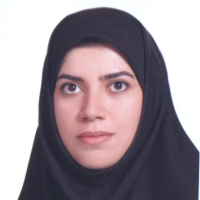Color and Light on Reducing Children’s Stress and Speeding up Their Recovery in Health Care Settings
The architectural environment as a basis factor for human activities has profound effects on its mental health. One of the architectural environments that is stressful is a hospital. Stress in the hospital with negative consequences that delay patient recovery. One of the groups of patients who are more vulnerable in this case are children. Since children stay at hospital with a lot of concern, an interior design with appropriate colors can show the hospital space less formal and provide a suitable and friendly environment for them. This condition can act as an emotional change. The purpose of this study was to investigate the effect of light and color on decreasing childrenchr('39')s stress and speeding up their recovery in therapeutic settings.
The research method of this paper was descriptive approach and information was collected through library studies and sample case observations. The research tool was interviewed and it should be noted that the phenomenological method was used in the qualitative way. The samples were from "Omid Isfahan Hospital" (Isfahan province, center of Iran) and the participantschr('39') community included two groups of children and their parents. The children included 12 girls and 8 boys, a total of 20 sick children and their parents. Prior to conducting interviews, the participants in the research were assured enough that, their information would remain confidential. Interviews were conducted to gather information from parents, and questions about hospital space, spatial defects, and child reactions to the hospital were asked to address the problems, such as cold and airlessness of the spaces and it relations to increase the children stress. In the next video interview with children, there were pictures of external facades, lobby spaces, corridors, admissions and hospitalization rooms of several health centers for children, and children were asked to give their mentality and feelings to the images of the expression
During an interview with parents, they stated that their children were afraid to enter the hospital when they arrived at the hospital. Some other parents stated that their children were stressed when they were in the corridor due to long duration, inappropriate light and color, and finally they refused to go to the corridors. They also pointed out that the furniture in the lobby and the waiting room was not commensurate with the size of the child, and there was also no room for play and entertainment, which would exacerbate the childrenchr('39')s tiredness during the waiting. The findings of the childrenchr('39')s video interview showed that they were more interested in happy colors and natural light. Seeing the images of the hospitalchr('39')s exterior, they were welcomed with cheerful shapes and curved shapes as well as good night lighting. In conjunction with the lobby and the waiting room, they preferred the atrium spaces that led enough natural light into the building. Childrenchr('39')s passion was more receptive to childrenchr('39')s designs and colors. The largest selection of children was the corridors that had wall paintings, enough light, and defeat or indentations along their path. The children preferred the inpatient rooms that had relaxing colors and multiple windows with adequate natural light because they inspired a sentimental, intimate home–like atmosphere.
It should be considered in the design of childrenchr('39')s hospitals. Hospital is able to create favorable conditions, tailor–made design for children and at the same time, it is applied, as well as the improvement of the quality of space, to support children who are in poor mental conditions with fear and stress. Two factors of color and light were among the factors that enhance the quality of space, and the coordination of these two factors with other hospital architectures had a significant effect on reducing the stress of children and their mental relaxation. As a result, Omid Isfahan Hospital did not have such spatial quality and was far from universal standards.
- حق عضویت دریافتی صرف حمایت از نشریات عضو و نگهداری، تکمیل و توسعه مگیران میشود.
- پرداخت حق اشتراک و دانلود مقالات اجازه بازنشر آن در سایر رسانههای چاپی و دیجیتال را به کاربر نمیدهد.


